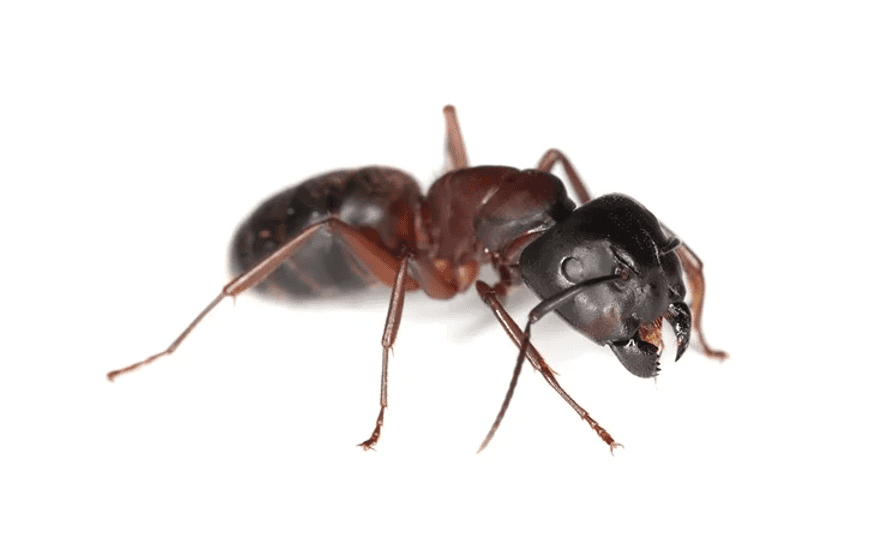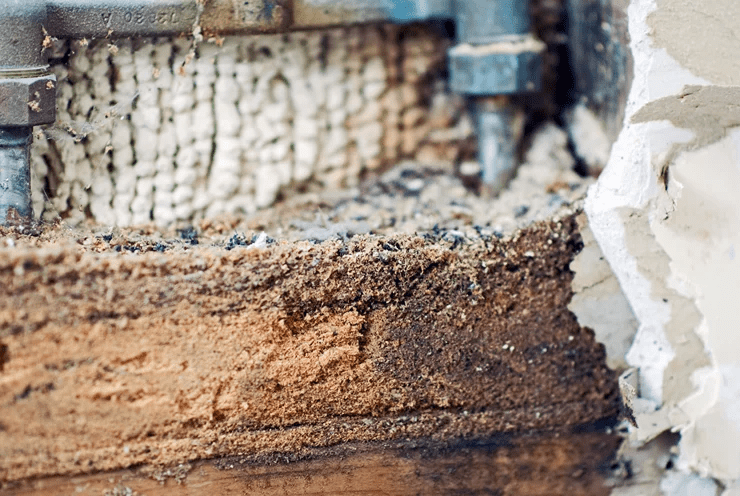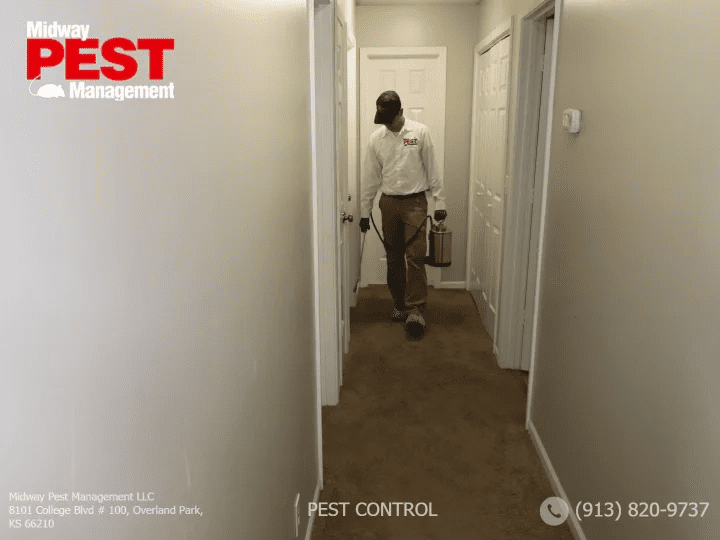
It can be unnerving to see enormous, dark ants inside your home, especially if they have wings. Many homeowners are relieved to learn that these visitors aren’t termites, who rarely wander outside. But if ignored, carpenter ants can cause a lot of devastation. Carpenter ants, like carpenter bees and termites, are one of the most common wood-destroying insect pests in the United States.
So how can you tell if you have a carpenter ant problem? The best way to identify a carpenter ant is through its color, size, and body. Other indirect indicators of a carpenter ant problem are the damages and evidence they leave behind, as well as their habits.
How Can You Identify A Carpenter Ant?
1. Color
Carpenter ants are typically brown or black in color, ranging from reddish-brown to dull black in appearance. Some are a mix of black and orange, while others are reddish-orange in color. While color alone isn’t enough to determine whether you have carpenter ants, it is a good place to start.
2. Size
Try estimating the size of ants as you observe them. Carpenter ants aren’t particularly large creatures. Worker ants are common in the home. They typically range in size from 3/8 to 1/2 inches in diameter. Carpenter ants, on the other hand, are smaller in some regions. Carpenter ants are as small as 3/16 of an inch in Minnesota, for example. Consider other characteristics in addition to size when making a note of it.
Carpenter ants have huge heads and mandibles, and they are black in color. They have two sorts of workers: the larger troops are roughly 1/2 an inch, and they can move up to 100 yards away from the colony. The smaller employees are only 1/4 an inch long and stay much closer to the main nest and don’t stand out much from other house ants.
3. Body
Keep an eye out for a rounded thorax. The thorax is the section of an ant’s body directly below its head. Carpenter ants have a thorax that is rounded. The upper surface should be uniformly rounded.
Examine the antenna and the waist. A carpenter ant’s midsection should be pinched and slender. Their antennae will be somewhat bowed. Carpenter ants can be distinguished from termites by looking at their antennae and waist. Termites have large waists and straight antennae. Carpenter ants have only one node on their waist, compared to other ants.
4. Ant Queen
The queen of a colony of carpenter ants is a fertilized and functional female. She is wingless and measures 13 to 25 mm in length. Her color varies per species, although it is typically dark brown, reddish, yellow, or black.
The queen’s body is divided into a head, thorax, and abdomen, or gaster, in the same way that worker ants’ bodies are divided. The queen is exclusively responsible for the colony’s reproduction and survival. The majority of carpenter ant species have only one active queen per colony, however, others have numerous queens.
Signs Of Carpenter Ants

1. Wood Shavings
Look for piles of wood shavings. Carpenter ants don’t eat wood, but they do dig tunnels in it. They will burrow through your home’s wood furniture, such as desks or cabinets. You may notice mounds of wood shavings directly beneath wooden things such as desks if you have a carpenter ant infestation. Frass is the name for these wood shavings.
Frass is made up of sawdust, insect bites, and ants that have died. It’s a solid sign you’re dealing with an infestation, and you should get advice from a pest management expert to identify the best course of action.
2. Ant Sounds
Gently touch your ear on your home’s walls. An ant colony is easily disturbed by tapping and you might hear a gentle rustling noise if you have an infestation, this is most likely carpenter ant activity within their satellite nests.
Carpenter ants can build their nests anywhere in your home, but they prefer to be near window frames or water sources. Carpenter ants can be found in a variety of places, including the kitchen and the restroom. To find nesting, try tapping in these areas.
3. Damage
When you have a black carpenter ant problem, this usually leads to structural damage as they will eat through the wood inside your home and walls. Structural wood, especially around areas with excess moisture, is the perfect place to set up satellite nests, as it has both food and water. Other indicators of an infestation of carpenter ants are decayed wood around your property and dead insects around your home.
What You Need to Know About Carpenter Ants
Common Diet
Carpenter ants eat both sweet and protein-based foods outside, such as live and dead insects (such as the honeydew produced by aphids and certain scale insects). Carpenter ants eat meat, lipids, and sweet foods like syrups and jellies when they are indoors.
Communication Habits
Chemical phonemes allow foraging ants to communicate. A pheromone released on the ground from the underside of a worker’s body marks the shortest path back to the nest when it finds food. For other foragers to follow, this marks the road back to the food source. As more foragers follow the designated route, the scent is reinforced for others to follow, keeping the foraging trail “alive” until the food supply has vanished.
Foraging Habits
Carpenter ants are mostly nocturnal and hunt at night. During the day, though, certain species forage. During the spring and summer, daylight foraging has been recorded more often. To find nourishment for the colony, foraging workers wander up to 100 yards from the nest. Carpenter ants are omnivorous, meaning they may eat both indoors and outside.
Their diet is diverse, with protein and sugar sources dominating. During the spring, many species prefer proteins to carbs, but in the fall, they prefer carbohydrates. Carpenter ants, unlike termites, are unable to digest cellulose in wood and thus don’t consume it. They only dig for wood to build nesting galleries and tunnels.
Why Do You Have Carpenter Ants?
1. Available Water Source
Carpenter ants build their nests in moist wood found under decks, on porches, behind windows, inside roofs, and in other weathered locations. These pests are looking for safe haven from predators and the elements, as well as easy access to food.
2. Available Food Source
Other insects, both alive and dead, as well as plant nectars and juices, honeydew, syrup, jelly, sugar, salt, fruits, meat, oil, and fat, are all sources of food for these pests. Meats, sugar, honey, jelly, grease spills, and pet food are all appealing to them in the home.
3. Available Openings
They frequently gain access to homes and other structures through foundation cracks and other gaps, as well as tree branches that abut the roof. Basically, any hole or opening can be where carpenter ants can enter.
Midway Pest Management: The Best Pest Management Professionals

No matter the species of carpenter ants that have built a parent colony on your property, we at Midway Pest Management can kill any species of ants you want to get rid of. No carpenter ant nest is safe from our pest control methods. Our team of pest experts knows how to flush out all types of carpenter ants from their parent and satellite nests. Call us now to get a free quotation.
Learn More: How to Rid Your Home of Carpenter Ants